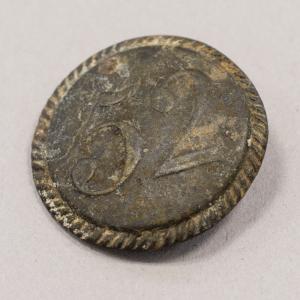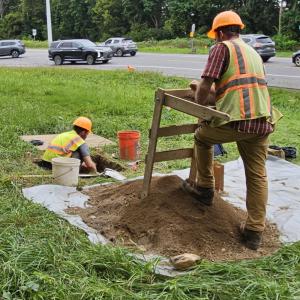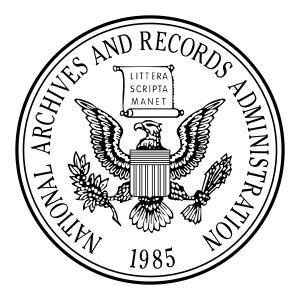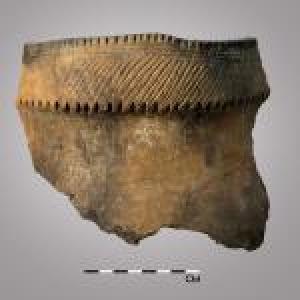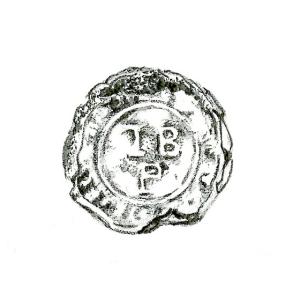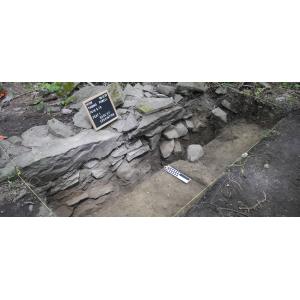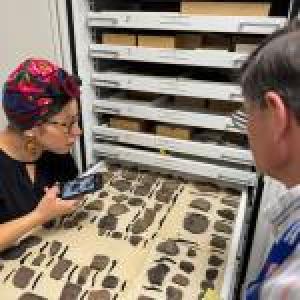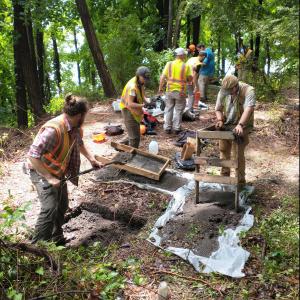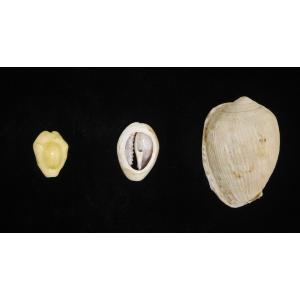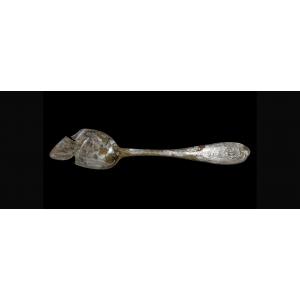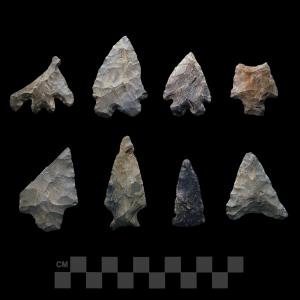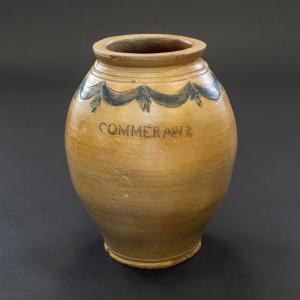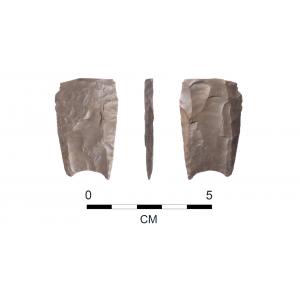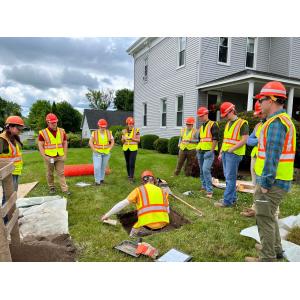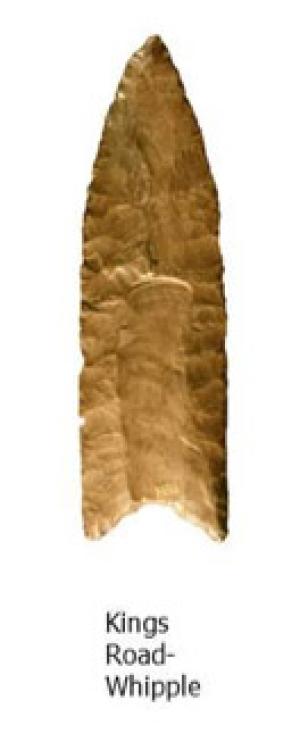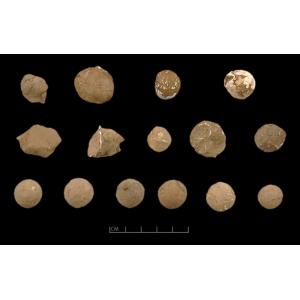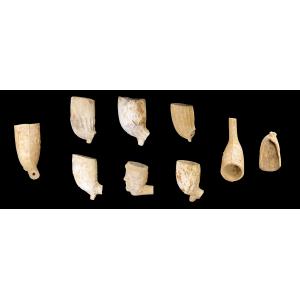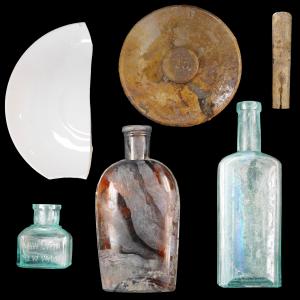News Articles
From Bunker Hill to Ground Zero: A Button’s Journey Through History
Published June 2, 2025 | Historical Archaeology
Unearthing History: Archaeologists Explore Ancient Genesee Overlook Site in New York
Published November 12, 2024 | CRSP
Repatriation
Published October 23, 2024 | Bioarchaeology
The Native American Graves Protection and Repatriation Act (NAGPRA) is a federal law that provides a process for the return of Native American cultural items to federally recognized tribes. It applies to any institution that receives or has receiv...
Unearthing Ceramic Technology and Pottery Traditions at the Mohawk Garoga Site
Published October 23, 2024 | Native American Archaeology
The Haudenosaunee (meaning “People of the Longhouse” or Iroquois) are famous for their pottery. In the 16th century, they produced thin walled, finely tempered pots of various sizes with well-defined collars decorated with incised geometric patter...
Hallowing This Ground: The Courtland Street Burials and Lake George Battlefield Park
Published July 9, 2024 | Bioarchaeology
On February 7, 2019, a housing development excavation destroyed numerous unmarked military graves on Courtland Street in Lake George village. Following reports of exposed human remains, Lisa Anderson, curator of bioarchaeology at the New York Stat...
NYSM Archaeologist Featured in the Times Union for Research Identifying 19th-Century African American Farms
Published February 5, 2024 | Historical Archaeology
NYSM Historical Archaeologist Michael Lucas and his team were recently featured in the Times Union for their fieldwork and research leading to the identification of Albany-area farms owned and operated by African Americans during the 1800s. Dis...
NYSM Archaeologist Talks Trash with the New Amsterdam History Center
Published January 31, 2024 | Historical Archaeology
On Thursday, February 8 from 6-7:30pm, NYSM Historical Archaeologist Michael Lucas joins the New Amsterdam History Center for the online event, "Trash Talk: A Lively Discussion of 17th Century Refuse, Recycling, and the Reshaping of Manahatta's ...
Coupling Indigenous Artwork and Ancient Artifacts
Published January 22, 2024 | Native American Archaeology
The New York State Museum maintains its extensive material collections for the benefit of individuals and communities across the New York region and beyond. Increasingly, indigenous scholars, artists, and community members are accessing the NYSM's...
Indigenous Activity in the Hudson Highlands
Published August 1, 2023 | CRSP
Archaeologists from the NYSM’s Cultural Resource Survey Program kicked off this year’s field season with a survey in the Hudson Highlands in an area overlooking the Hudson River not far from Manitou Mountain. This is within the traditional homelan...
NYSM Bioarchaeology Staff Study Remains of Revolutionary War Soldiers
Published May 11, 2023 | Bioarchaeology
In 2019, bones dating back to the late 18th century were uncovered at a Lake George Village construction site. For the past four years, NYSM bioarchaeology staff Lisa Anderson, Julie Weatherwax, and Alexandra DeCarlo have been working together wit...
Reticulated Cowrie Helmet Shells: A Small Reminder of the Link between New York and the Caribbean
Published February 23, 2023 | Historical Archaeology
Billions of Moneta and Annulus cowries from the Indian Ocean were traded for enslaved people along the west coast of Africa from the 15th through 19th centuries. Much larger reticulated cowrie helmets, native to the w...
African American Farmers in the Upper Hudson Valley, 1820–1880
Published February 7, 2023 | Historical Archaeology
Agriculture has been central to the cultural history of the Hudson River Valley from the first indigenous farmers to 17th-century Dutch farms, and finally through the development of modern mechanized farming during the 19th century. Regrettably, t...
The McVaugh Donation: Important Collections Come in Small Packages
Published November 28, 2022 | Native American Archaeology
Over the years, the NYSM has received donations of very large archaeological collections numbering hundreds of thousands of specimens—but small collections can also be important. One such donation, modest in size but rich in content, was...
Science Tuesday: Uncovering Commeraw Stoneware
Published August 2, 2022 | Historical Archaeology
New York stoneware vessels bearing the name “Commeraw” have been included in collections for years, but more recently they have become recognized for their historical importance. Thomas Commeraw was an African American potter who worked in the Cor...
Science Tuesday: Late Ice Age Stone Point
Published July 25, 2022 | Native American Archaeology
Located in the middle reach of the Hudson River, Magdalene Island (Dutchess County, NY) has long been known to archaeologists as a location visited by ancient indigenous peoples. Until now, stone tools and other artifacts curated at the NYSM sugge...
Uncovering Historical Places
Published July 5, 2022 | CRSP
Staff from the Museum’s Cultural Resource Survey Program (CRSP) recently hosted staff and six student interns from the NYS Department of Transportation (NYSDOT) at the historic period DeGraff archaeological site in the Mohawk Valley of Central New...
Science Tuesday: Clues for dating Paleoindian sites in New York State
Published September 21, 2021 | Native American Archaeology
How old are the oldest archaeological sites in New York? Put another way, when did Native Americans first people the region that we now call New York? These questions are difficult to answer because there are no radiocarbon-dated sites of these ea...
New Acquisition: Revolutionary War Military and Domestic Artifacts from Long Island
Published September 7, 2021 | Historical Archaeology
In August 2021, the New York State Museum acquired 200 artifacts from the LAMAR Institute in Savannah, Georgia. These artifacts are the result of the only systematic archaeological study of three Revolutionary War battlefield sites on the north sh...
ScienceTuesday: What We Can Learn from Ball Clay Tobacco Pipes
Published May 11, 2021 | Historical Archaeology
Ball clay tobacco pipe fragments are one of the most common artifacts found on archaeological sites from the 17th through the 19th centuries. There are many reasons for this including the fact that most people smoked, tobacco pipes were relatively...
New Acquisition: 420 Albee Square Collection
Published May 6, 2021 | Historical Archaeology
In March of 2015, archaeologists excavated 3 wells, 3 cisterns, and one possible privy at 420 Albee Square in Brooklyn, New York. The New York State Museum acquired the resulting collection in 2020. The artifacts recovered from the excavations ill...



